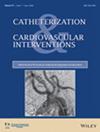Long-Term Clinical Association of Superficial and Nodular Calcification on Intravascular Ultrasound-Guided Successful Drug-Coated Balloon Endovascular Therapy for De Novo Femoropopliteal Artery Disease
Abstract
Background
The long-term efficacy of drug-coated balloons (DCBs) is reduced in calcified lesions. While intravascular ultrasound (IVUS)-guided DCB endovascular therapy (EVT) has shown favorable results in femoropopliteal artery (FPA) disease, the prognostic significance of calcification type remains unclear. This study evaluated the impact of calcification types, as assessed by IVUS, on long-term patency after successful DCB treatment of de novo FPA lesions.
Methods
In a retrospective, single-center study, 131 symptomatic patients with 150 de novo FPA lesions underwent successful IVUS-guided IN.PACT DCB EVT (residual stenosis < 30%). The median follow-up was 1185 days. The primary endpoint was freedom from restenosis. Multivariable analysis was performed to identify factors associated with restenosis.
Results
The mean patient age was 74.4 ± 7.6 years, and 75.6% were male. Freedom from restenosis at 3 years differed significantly by calcification type: 78.3% in no calcification, 68.7% in deep calcification, and 43.4% in superficial/nodular calcification (p < 0.001). Despite similar minimal lumen areas post-procedure, superficial/nodular calcification was independently associated with higher restenosis risk. Other significant predictors included dialysis-dependent renal failure, isolated popliteal artery lesions, subintimal involvement on IVUS, calcified lesion length ≥ 80 mm, and total DCB length ≥ 200 mm.
Conclusions
Superficial/nodular calcification on IVUS is a major predictor of restenosis after successful DCB-EVT for de novo FPA disease. These findings suggest a potential role for plaque modification or debulking strategies before DCB use in such lesions.


 求助内容:
求助内容: 应助结果提醒方式:
应助结果提醒方式:


